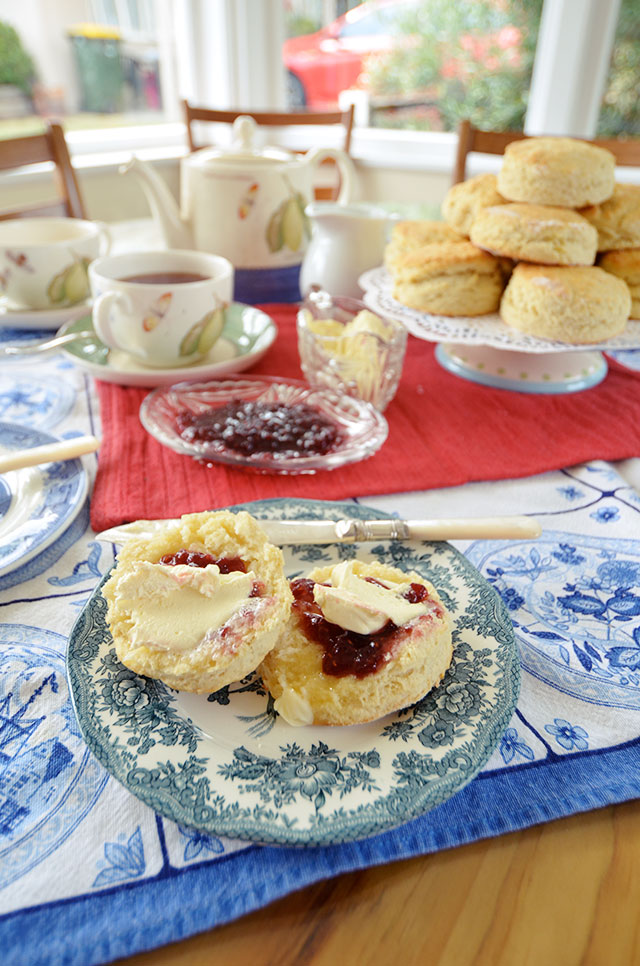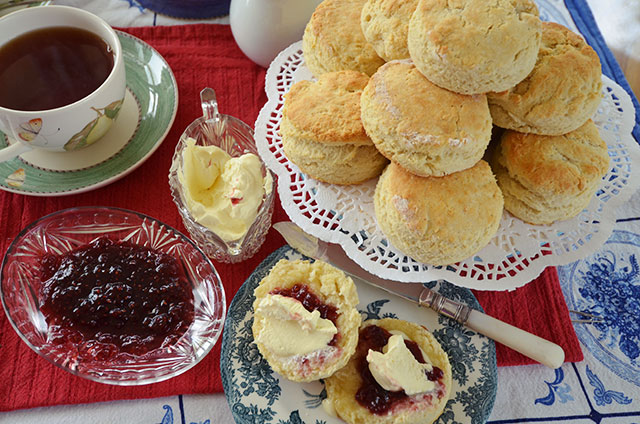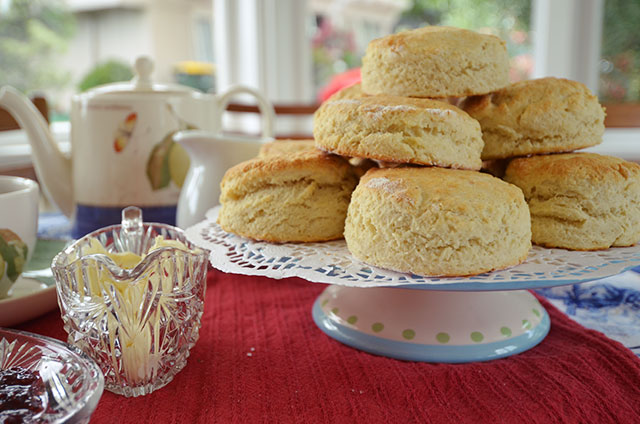Scrumptious scones

Scones are a fantastic weekend treat. Now I have the hang of them, they’re relatively easy (if a little messy) to make and wonderful to butter and scoff with a cup of tea. Scones are a super idea if you’ve been out in the garden working hard herding your rabbits or for when you’ve slept late and get up to whip up as part of your marvellously home made brunch.
This batch of scones was made from an Allyson Gofton recipe with a few tweaks from the streets - like adding a couple of tablespoons of milk powder to add to their creamy tenderness.

First of all, I always feel more confident about my scones if I make them using buttermilk. I feel as if the buttermilk lends a lightness to the dough because of the ‘activity’ in the milk. Buttermilk can be found in supermarkets, but if you’re like me, it’s not a staple ingredient in the refrigerator. I make fake buttermilk by adding a little lemon juice to my milk and letting it stand for a while until it loses its silky ‘feng shui’ and gets all jiggly in the jug.
Big, big secret to making tender scones is to only handle the dough enough to mix the ingredients. Scone mix hates heat (until it’s in the oven) so cold hands and cold butter and bare minimum mixing is the key. Don’t even roll the dough out, that’s too much stress for it. Press it out with your cold fingers. Don’t worry about it being pretty - due to the wetness and stickiness of the dough, it won’t be - but it all comes together in the end.
Normally I chop my dough into rough squares but this time I used a round cutter and really enjoyed the result. With a round cutter you can ensure uniformity with your scones. I thought while I was using the largest circle cutter I own to form these scones, that using a small cutter would be great if you wanted to make scones for a large number of people, so they could just pop those fluffy scones into their mouths while holding their cups of tea.

Anyway, check out the associated links below. The featured cooks have super great hints and tips on getting a good result. Start with a basic scone recipe and give it a go. Don’t be discouraged if your first attempts turn out like rocks - mine were like small weapons of minor destruction. As simple as this recipe appears (and it is simple once you get the hang of them) they do take some skill - but you can be like me and totally acquire that skill with a bit of practice.
Check out Annabelle White’s energetic, step by step video (below) guide to making scones. Her techniques are spot on and well worth following.
Associated links:
- Basic scones (Allyson Gofton)
- Fruit buttermilk scones (Annabelle White)
- Savoury spiral scones (Anna Olson)
- How to make buttermilk (about.com)
- Dreamy scones (smitten kitchen)
- Making scones with a mixer (Paul Hollywood)
Scone etiquette (Devonshire vs Cornish teas):
- When you are eating scones during a Devonshire (or Devon) Tea, add the clotted cream to your scone before adding the jam - do not use butter.
- When you are served scones during a Cornish cream tea, butter your scone and then add the jam, followed by the clotted cream.
- Apparently, “Thunder and Lightning” cream tea consists of clotted cream, golden syrup, treacle, or honey.
PS: Where clotted cream is unavailable, whipped cream is acceptable (and actually, nicer, I reckon).